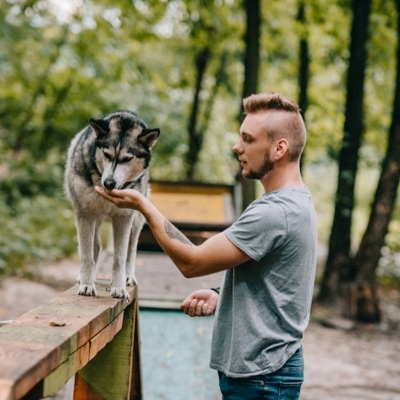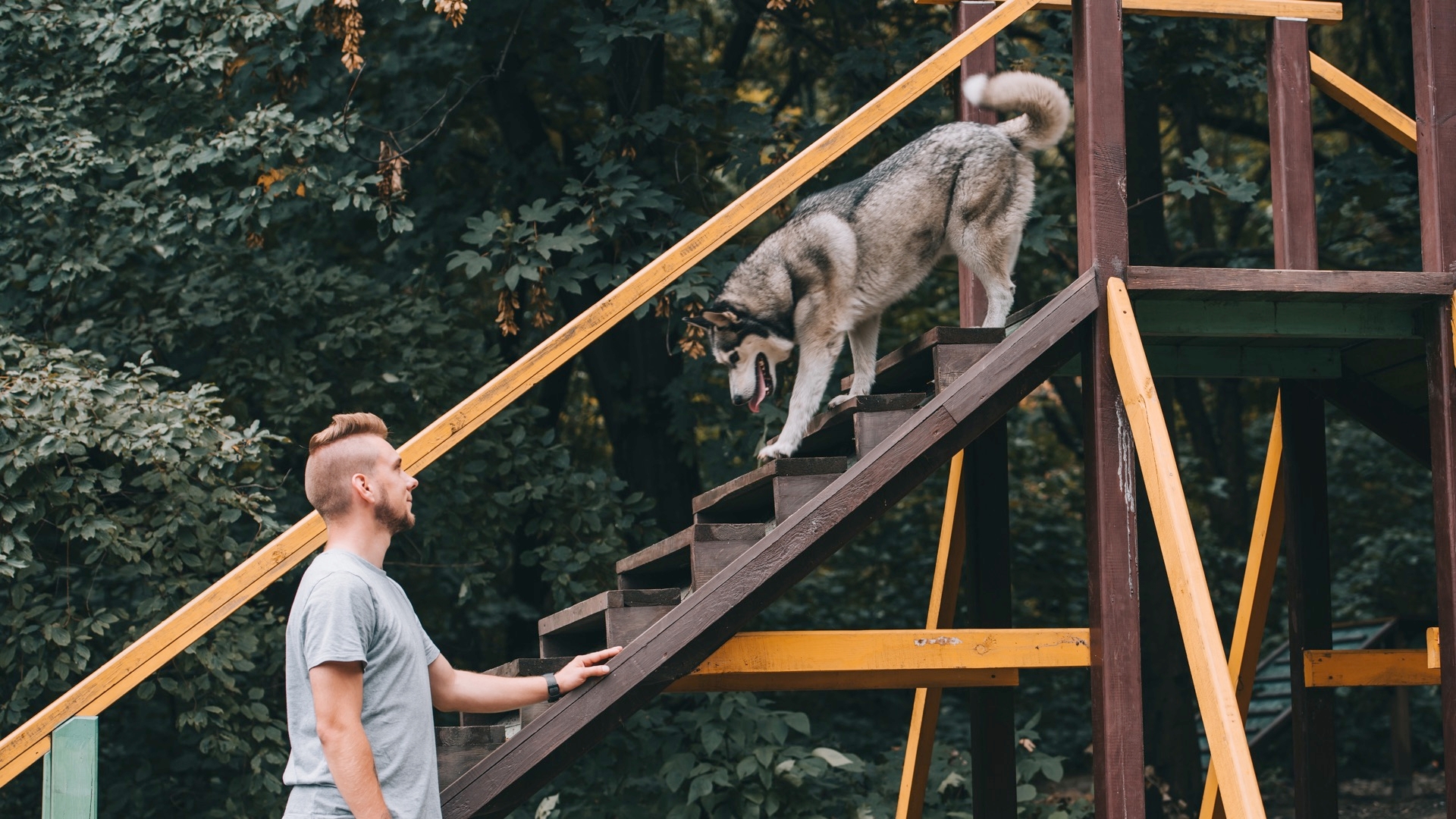Advanced Training Concepts:
Dog Training
Summary:
Training a dog takes time, understanding, patience, and consistency. Here are a few typical behavior challenges dog pet parents face and some suggestions for managing and solving them.


Training a dog takes time, understanding, patience, and consistency. Here are a few typical behavior challenges dog pet parents face and some suggestions for managing and solving them.
How training works:
Proper training is essential for a long, happy, and safe relationship with your dog, setting the foundation to ensure your dog stays physically fit, mentally alert, socially engaged, and emotionally satisfied.
To make dog training enjoyable and fulfilling, use a positive reinforcement approach. This is an approach that is rewards-based, fun, and effective. Dog training based on positive reinforcement helps pet parents understand how dogs think, learn, and communicate. In turn, the pet parents will understand how to encourage and reward appropriate and polite dog behaviors for real-life situations. This builds and nurtures the bond between the pet parent and their dog.
It is scientifically proven that animals will learn a new behavior faster and more successfully if they are allowed to voluntarily participate in the learning process and are rewarded for preferred behaviors.
Families have the best relationships with their dogs if they act as kind, benevolent influences for the family and help their dog understand their role in the household. Dogs feel safest and most confident knowing their pet parents are making the decisions and setting boundaries.
Puppies that work and are rewarded for all the good things in life are more confident, attentive, polite, respectful, and connected to their family. In the beginning: Supervise dogs closely during the first few weeks. It may help to have your dog on a leash in the house so you can keep a close watch and keep them out of potentially unsafe situations.
As you work with your dog, your dog will learn to repeat the behaviors you reinforce. Every family member must agree on which behaviors are acceptable and preferred, how to consistently reinforce these behaviors and what to do if a less favorable behavior is observed. Puppies can learn, too: just keep the training sessions short and fun, no more than five minutes at a time. Keep each training session upbeat, with plenty of opportunities for the puppy to offer and be rewarded for the preferred behavior.
Crate training is a big favor you can do for your dog. It's your dog's safe haven from the world. Your dog gets used to new sights, sounds, and people from the crate. A crate can be an effective management tool for potty- and house-training until you know how your dog reacts in different situations.
If your dog is left alone for several hours every day, start crate training now, even if you're just in the next room. Your dog needs to learn how to spend time without you. A dog that gets constant attention and is suddenly left alone for eight hours may bark, chew or develop other behavioral problems due to separation anxiety.
Make training time playtime, too. Talk, laugh, and have fun while your dog learns "sit," "down," and other essential behaviors. Be over-exuberant with plenty of praise at first, so they know they got it right. "Good off!" "Good sit!" and "Good potty!" when said with happy enthusiasm, all signal that they have made the right choice and have pleased you.
Dog training classes:
Take your dog to dog training classes. These classes give you hands-on practice with a trainer to guide you when you get stuck and are as much about training you as your dog.
Training helps you build and nurture a bond with your dog that lasts a lifetime.
Enroll your puppy in classes two weeks after receiving the first puppy vaccination. Puppy classes provide critical socialization training that helps puppies get along with other dogs as they grow up.
Get references and only work with a trusted trainer. Understand what type of courses they offer and, if possible, watch a training session to see if you like the trainer's methods and relationship with the dogs and students. I recommend classes that focus on positive reinforcement and reward. Both dogs and pet parents have more fun and learn faster with this method.
Establishing reliable behaviors takes time. Stay consistent and incorporate training into your daily routines.
Basic behaviors
- Loose-leash walking: Most pet parents want a dog that walks nicely on a leash without pulling. Positive training methods and proper equipment will help you teach this.
- Sit: Great for putting on the leash, greeting people, giving medication, brushing, and other situations.
- Stay: Don't move from a specific position, such as "Sit"
- Down: A position that may be more comfortable for the dog, especially if you want them to stay for more than a minute.
- Leave it: When cued to "Leave it", your dog will leave an object/thing/person alone and refocus on you.
- Come: Getting your dog to come to you when called is one of the most vital behaviors to fluently have on cue for your dog to perform each time.
- Go to your bed: An excellent place to be out of the way but still with you while you have company or eat dinner.
- Wait: Don't cross this line like a doorway. The dog doesn't have to sit or lie down, just not move forward.


